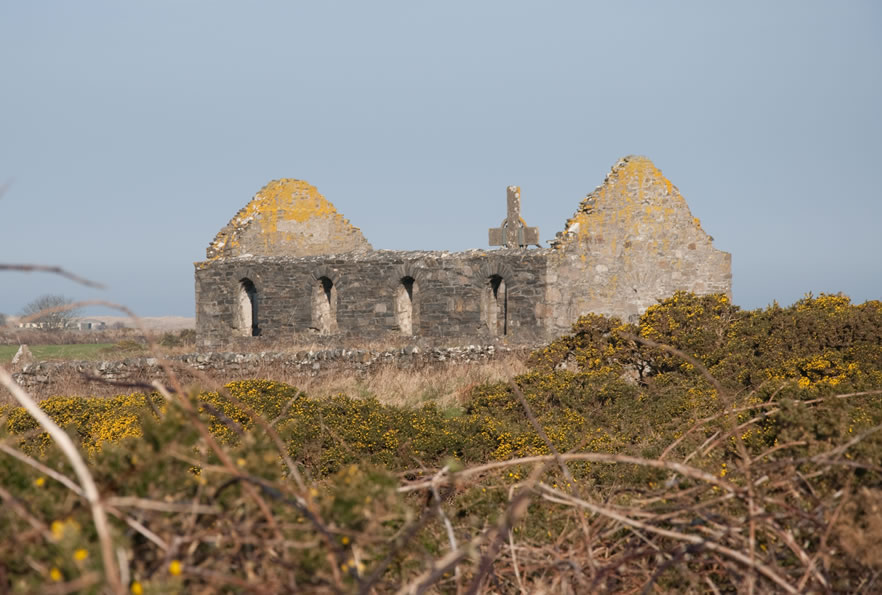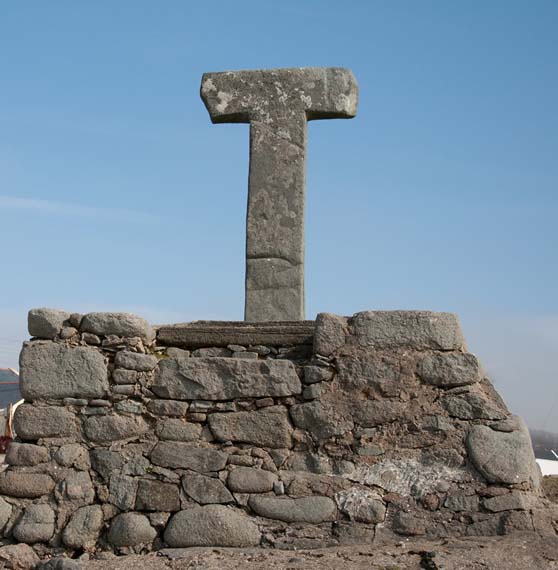2.9 Ray Church
Ray (pronounced ‘Rye’ in Irish, Ráith), is an ancient church site remarkable for its links with the abbey of Iona, and for its very tall high cross – 5.56m, one of the tallest if not the tallest in Ireland. The church stands on the east bank or the river Ray and near its estuary. From the 6th to the 8th centuries the river was a boundary between two small kingdoms, the Cineál Duach on the east of the river and the Cineál Lughdach on the west.

In the 7th century no fewer than four very important abbots of Iona came from the Cineál Duach. Almost certainly, this was their home church. The great high cross now stands inside the ruins which date mainly from the 17th century. As there is no decoration on the cross itself it is difficult to date it but it bears a striking similarity to the form and scale of St John’s Cross on Iona (of about AD 775) – arguably the oldest of the ringed (so-called ‘Celtic’) stone crosses in these islands – and may be contemporary with it. An elaborate legend says that the Ray cross was made on Muckish mountain for St Colmcille who intended to bring it to Tory Island but gave it instead as a gift to the local saint, Fionán, who had miraculously retrieved the Colmcille’s lost gospel book. In modern times, until recently, the cross – fallen and broken – lay in the adjoining graveyard probably at or close to its original location.























